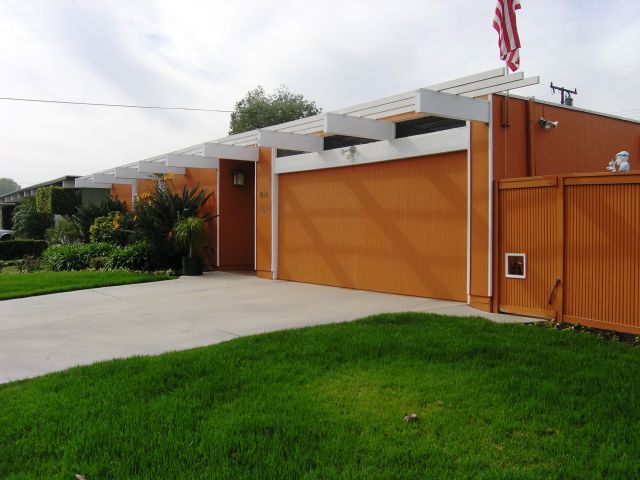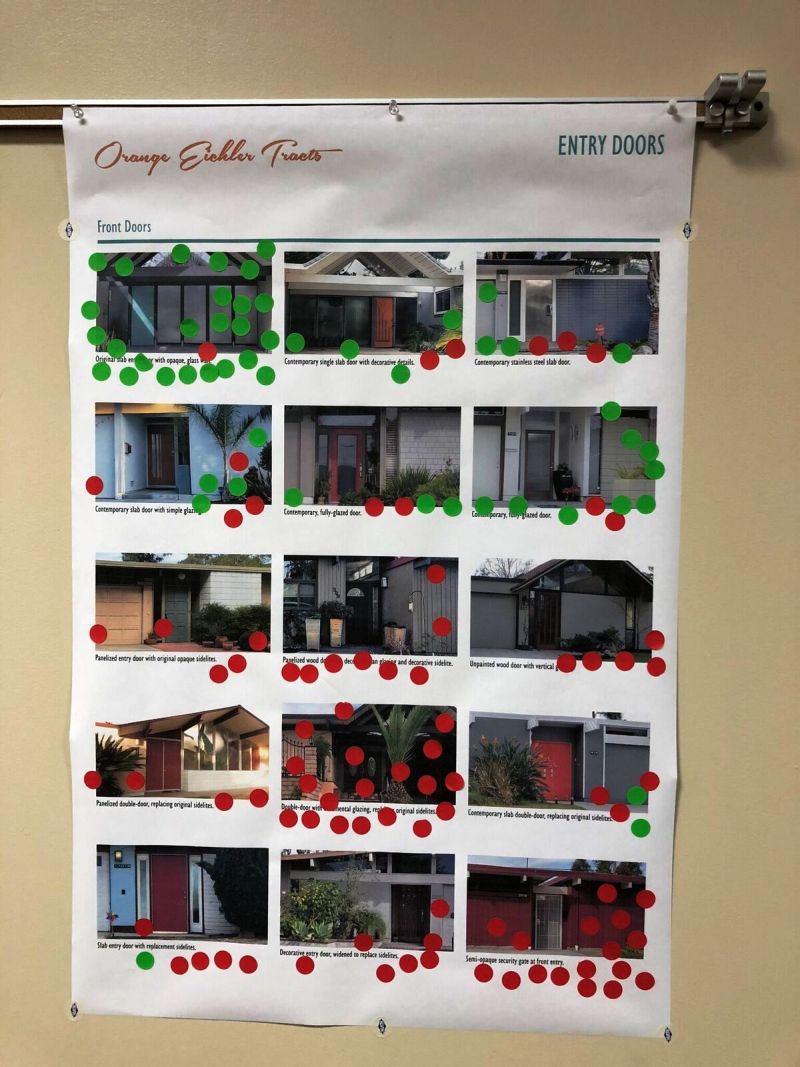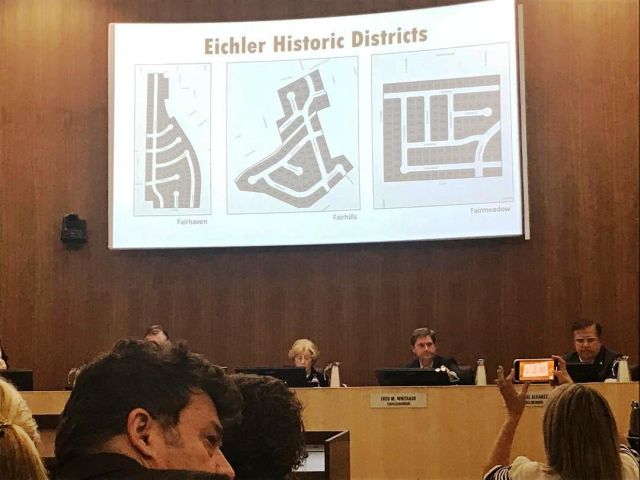
Orange’s Eichler Tracts Win Protection
 |
|
|
Orange County may not be the first place people talk about when they talk about Eichlers. It is, after all, 400 miles from the San Francisco Peninsula, where Eichler got his start 70 years ago, built so many of his homes, and turned the region into Eichler Central.
But when talk turns to ensuring that Eichler neighborhoods will live on for another 70 years, or more, people should be talking about Orange.
Last week the City Council of Orange, a city within that county, took one of the strongest steps towards Eichler preservation that has been seen in a while.
By a unanimous vote of five to none, and with no one at the meeting speaking in opposition, the council declared the attractive city’s three Eichler neighborhoods local historic districts. It also established ‘Eichler Design Standards’ to be used by city planners to ensure that changes in Eichler homes that can be viewed from the street preserve the Eichler aesthetic.
These are standards, not just guidelines. That means there are rules in this document that can be enforced – not just recommended.
 |
|
|
“It feels great,” says Adrian Turner, one of many people in the three tracts who have been working on this effort for six or seven years – some a bit longer.
Turner, who describes his main role in the effort as “cheerleading it on,” is quick to mention the many neighbors who worked on the effort, holding meetings, talking to their neighbors in support of preservation, serving on an advisory committee.
“It was really the awesome work of the city, consultants, and broader community engagement that made this happen,” he says.
How is it that no one showed up to oppose the plan? In recent weeks, the city received, after all, letters from a number of people protesting aspects of the standards. One said they were “way too detailed and too controlling.”
Another, noting that the same consultants, Page & Turnbull, prepared a similar document for Palo Alto, but one that did not include enforceable standards, wrote:
“[Palo Alto’s] ‘Guidelines’ respects the individual rights of Palo Alto’s property owners. [Orange’s] ‘Standards’ is an attempt to control Orange residents’ behaviors and is intrusive and over-reaching.”
The three Orange Eichler tracts, with 339 homes total, include Fairhaven (1960), Fairmeadow (1962), and Fairhills (1964).
 |
|
|
The standards do not allow for second stories atop existing Eichler homes. But they do allow for two-story additions to the rear of homes – with strict conditions.
"The standards deal with privacy and compatibility of design, they take privacy into consideration, and visibility from the street,” says Marissa Moshier, the city’s historic preservation planner. “Any addition would need review by the design review committee.”
Most, lesser changes to homes could be handled administratively, mostly by going over drawings with Moshier.
Turner believes much of the opposition melted away as people learned more about how the district and standards would affect them. “By the time it got to the final thing, most of the strong concerns had been mitigated,” he says. And for those who were still opposed, he believes they understood that council favored the standards.
The Mills Act also got some people behind the move. The same night the council approved designation, it also OK’d eight Mills Act contracts with property owners elsewhere in town. (Council approves these contracts in batches twice a year.) These contracts offer significant property tax benefits to people who live in historic homes who agree to use the savings for home improvement and maintenance.
Now that the Eichlers have been declared historic, some owners are already filling out paperwork for Mills contracts, Moshier says. She notes, though, that “people in the Eichler neighborhoods had a lot of enthusiasm whether or not there were financial incentives.”
This is a case where citizens attribute success to the city – and vice versa.
 |
|
|
The effort began with Eichler residents seeking to put their homes on the National Register of Historic Places. Realtor Kelly Laule originally spearheaded that effort several years ago, and it will soon get back into gear. It was put on hold while the local districts and standards were devised.
That enthusiasm among neighbors for preservation convinced the city to get involved. And that made all the difference, Turner says.
“It took a lot of grassroots effort over the years but much of it fizzled out,” he says. “To do a National Register application, that’s not for mere mortals. But the city saw that a lot of Eichler homeowners had that interest, and they really started running with it.”
In turn, Moshier attributes success in convincing residents that designation and standards would be in their best interest for neighbors.
“A grassroots effort was key to the success,” Moshier says. “People in the neighborhoods worked together. They talked to each other about what preservation would mean. That kind of organization within the neighborhoods was really critical.”
Turner, who moved first to an Orange Eichler 15 years ago with his wife, Thuy, spent years restoring his home to its original aesthetic. And he saw danger when a neighbor proposed a second-story addition. That’s why he got involved.
“Now,” he says, “there’s solid protection in place for the neighborhood.”
- ‹ previous
- 449 of 677
- next ›



